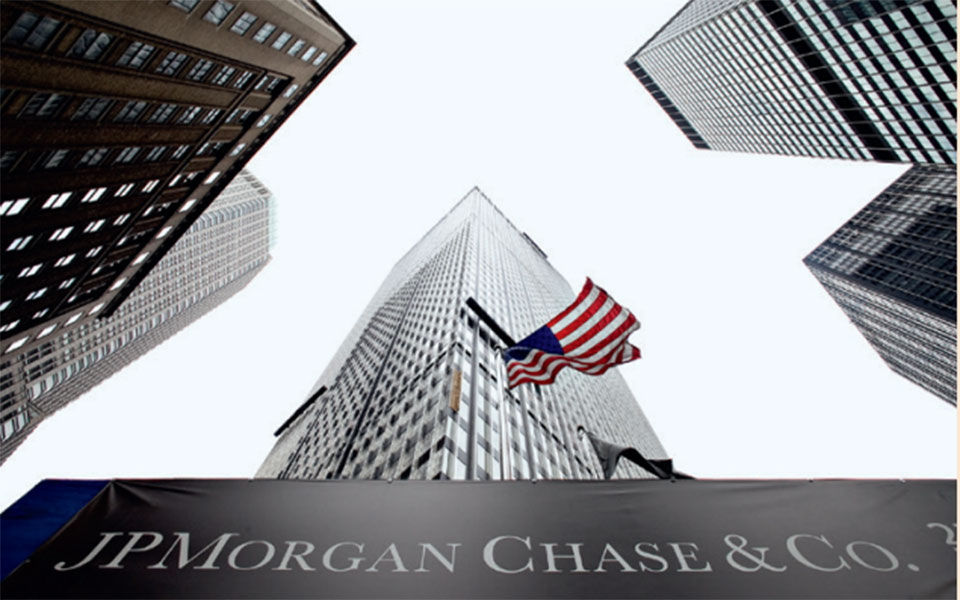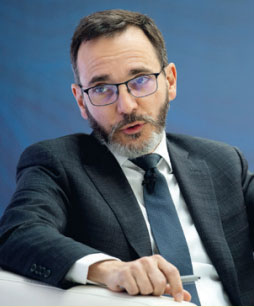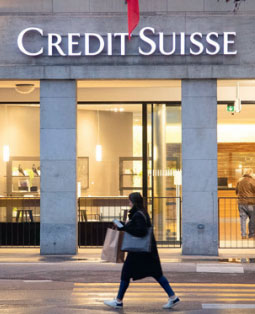
By early 2023, economists and business leaders expressed optimism that global economic growth might not end up slowing as much as predicted, with a recession gradually slipping out of the equation thanks to positive developments such as the “opening up” of the Chinese economy. , falling energy prices and the stability of the European economy.
However, the crisis in the banking sector that erupted in March changed the situation. International Monetary Fund last week downgraded its estimates for global growth, stressing that “the economy is entering a dangerous phase of low economic growth and high financial risk.”
slowdown
The IMF expects global growth to slow from 3.4% in 2022 to 2.8% in 2023, while its January estimate was 2.9% growth this year. “Uncertainty is high and the risk balance is growing as the financial sector remains volatile,” the Fund’s latest report says.
Fears about economic prospects intensified after its collapse Bank of Silicon Valley and Signature Bank, two regional banks in the US, and the loss of confidence in much more Credit Suisse in Europe, which was effectively sold to rival UBS in a rescue deal backed by the Swiss government.
The global economy is already facing the consequences of high and persistent inflation, rapid growth interest rates for fighting it, rising debt levels and Russia’s war in Ukraine.
Now, concerns about the health of the banking industry have been added to the list. “These forces are now interacting with new concerns about financial stability,” the IMF said, noting that policymakers trying to tame inflation while preventing a hard landing or painful recession “may face difficult trade-offs.”
The March events are a prime example of how the sharpest rise in interest rates since the 1980s can have unintended consequences. “On the surface, there is turmoil and the situation is quite fragile, as the recent period of banking instability has reminded us,” warned IMF chief economist Pierre-Olivier Guerrensa. Initially, the tightening of monetary policy was good news for banks, mainly due to the increase in net interest income. However, the March turmoil in the industry showed the other side of this coin. The tightening of lending conditions, already evident in both the US and Europe, and recent events are forcing banks to be more careful about who they lend to, how much they lend and at what interest rate. This will block credit flows and hurt the size of banks as well as the economy.
Allianz estimates that difficult conditions will lead to a 21% increase in bankruptcies worldwide.
Reducing borrowing
“Financial conditions have tightened, which is likely to mean a reduction in lending and lower activity if they continue,” the IMF said in a statement. If a shock to the global financial system leads to a “sharp” deterioration in financial conditions, global growth could slow to 1% this year, the IMF has warned. This would mean “a near-stagnant per capita income,” the Fund said.
In fact, the minutes of the Fed’s latest meeting showed that its economists are predicting that credit cuts due to banking turmoil will trigger a mild recession later in 2023.
According to analysts, the biggest problem for banks are deposits for the first quarter, and for March in particular. Deposits at JP Morgan Chase, Wells Fargo and Bank of America fell by about $521 billion in the first quarter from last year, the biggest drop in a decade.
However, the situation is not only unfavorable for banks. For the rest of 2023, conditions will become more challenging for many companies, with a slowdown in economic growth weighing on revenues, and a reduced ability of businesses to pass on higher costs to consumers, shrinking margins.
Allianz estimates that slower growth, monetary tightening and tighter credit conditions will lead to a 21% increase in bankruptcies globally, 49% in the US and 23% in the eurozone compared to 2022.
They are looking for something that will “pop”
The turmoil in the banking sector reminded and highlighted the effects of tightening monetary policy, Citigroup said. After the banking turmoil, investors will be wondering what could “surface” next, and Citi therefore believes that attention will begin to shift from the risks of higher interest rates to the risks of lower GDP and deterioration in fundamentals. The ongoing crisis of confidence will limit banks’ risk appetite and reduce credit inflows. “Even before the recent turmoil, lending conditions were tightening. Probably, in the future they will be even more “dragged out,” the American bank emphasizes.
2023 is not 2008, but it has significant spikes
However, the IMF has made it clear that while the rapid rise in interest rates has put pressure on banks and other companies, fundamental changes have taken place since the 2008 global financial crisis. Banks now have much more capital to withstand shocks. They also limited risky lending due to tightening regulations.
Opinions of investment houses are similar. As JP Morgan notes, for example, the banking system has always been built on trust. When trust is questioned, it can lead to a sense of panic that feeds on its own and becomes difficult to contain. In addition, it is very difficult to predict this situation with any accuracy. While there is huge uncertainty as the banking sector drives credit creation and subsequent economic growth, recent developments in banks weigh on the economic outlook.

Banks now have much more capital to withstand shocks.
However, as JP Morgan points out, we are not experiencing a repeat of 2008 for three main reasons: 1) politicians have the tools to resolve banking crises and the biggest banks are much stronger, 2) the economy is in a very different state. 3) the size of the problem is much smaller so far – Silicon Valley Bank ($209 billion) and Signature Bank ($110 billion) together own about half of the assets of Lehman Brothers ($640 billion) and Bear Stearns ($400 billion). billion) was also more than both.
But the IMF pointed to similarities between the latest banking turmoil and the US savings and loan crisis of the 1980s, when troubles at smaller banks undermined confidence in the financial system as a whole. The lesson of this March is that problems in smaller institutions could shake the confidence of the financial market as a whole, especially as persistently high inflation continues to hurt bank assets.
So far, investors are evaluating a fairly optimistic scenario for the economy, despite the recent banking turmoil, the IMF said. However, these expectations can quickly come true. For example, if inflation continues to rise, investors may decide that interest rates will stay high for longer. “Then the pressure could re-emerge in the financial system. Trust, the foundation of finance, can continue to erode. And funding could quickly disappear for both banks and businesses,” the Fund warned.
 Warning
Warning
“dangers for banks strengthened as interest rates rose quickly to curb inflation. “Historically, such dynamic rate hikes by central banks are often accompanied by pressure that increases the number of errors in the financial system,” warned IMF chief economist Pierre-Olivier Guerrensa.
521 billion
dollars deposits in the largest US banks – JPMorgan, Wells Fargo, Bank of America – decreased in the first quarter.
 Interest rates
Interest rates
“Increase interest rates to fight inflation is the biggest problem for the financial system and economy. We don’t know if any other bank is vulnerable to this. Credit Suisse was already very weak, but there are other European banks that are very fragile,” said John Danielson, director of the Systemic Risk Center at the London School of Economics.
1%
he can slow global growth if a shock to the global financial system leads to a “sharp” deterioration, the IMF has warned.
Borrowing
“Eat signs that bank lending in the euro area is falling as a result of the continued increase in interest rates. We must remember that monetary policy decisions start to be felt in the real economy after about a year and a half, so the full impact is yet to be seen,” said Konstantinos Herodotou, Governor of the Central Bank of Cyprus.
Source: Kathimerini
Lori Barajas is an accomplished journalist, known for her insightful and thought-provoking writing on economy. She currently works as a writer at 247 news reel. With a passion for understanding the economy, Lori’s writing delves deep into the financial issues that matter most, providing readers with a unique perspective on current events.